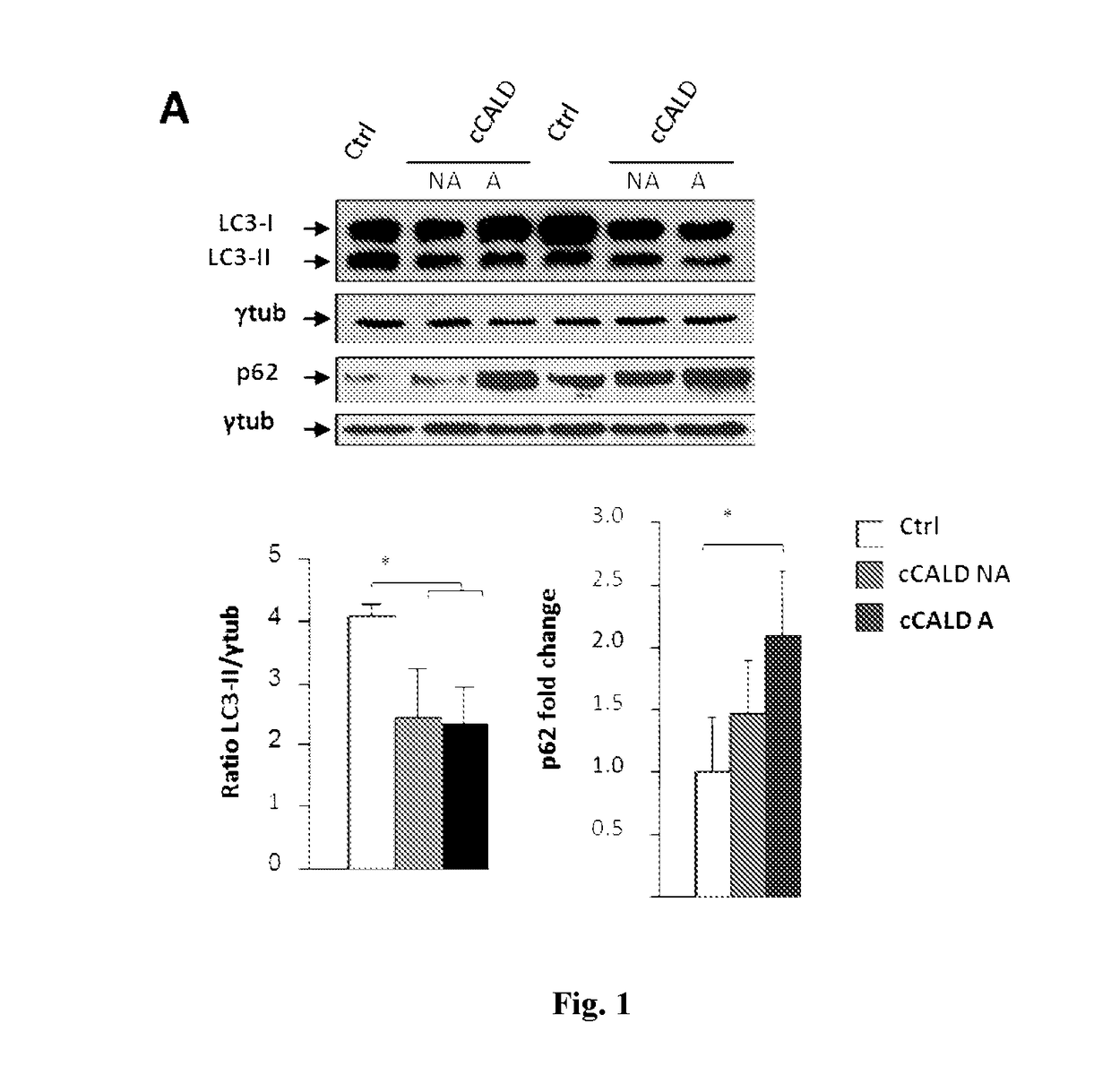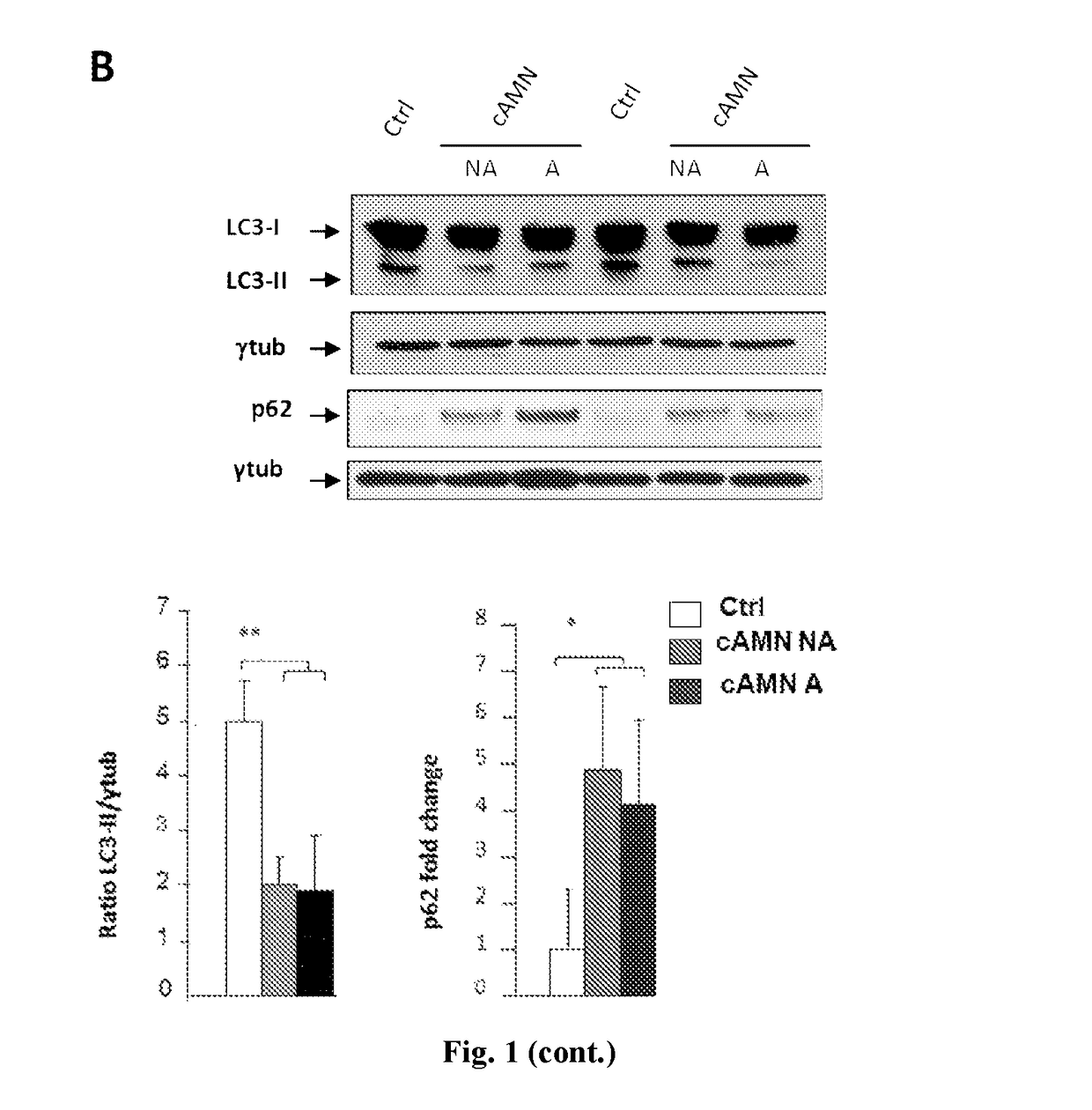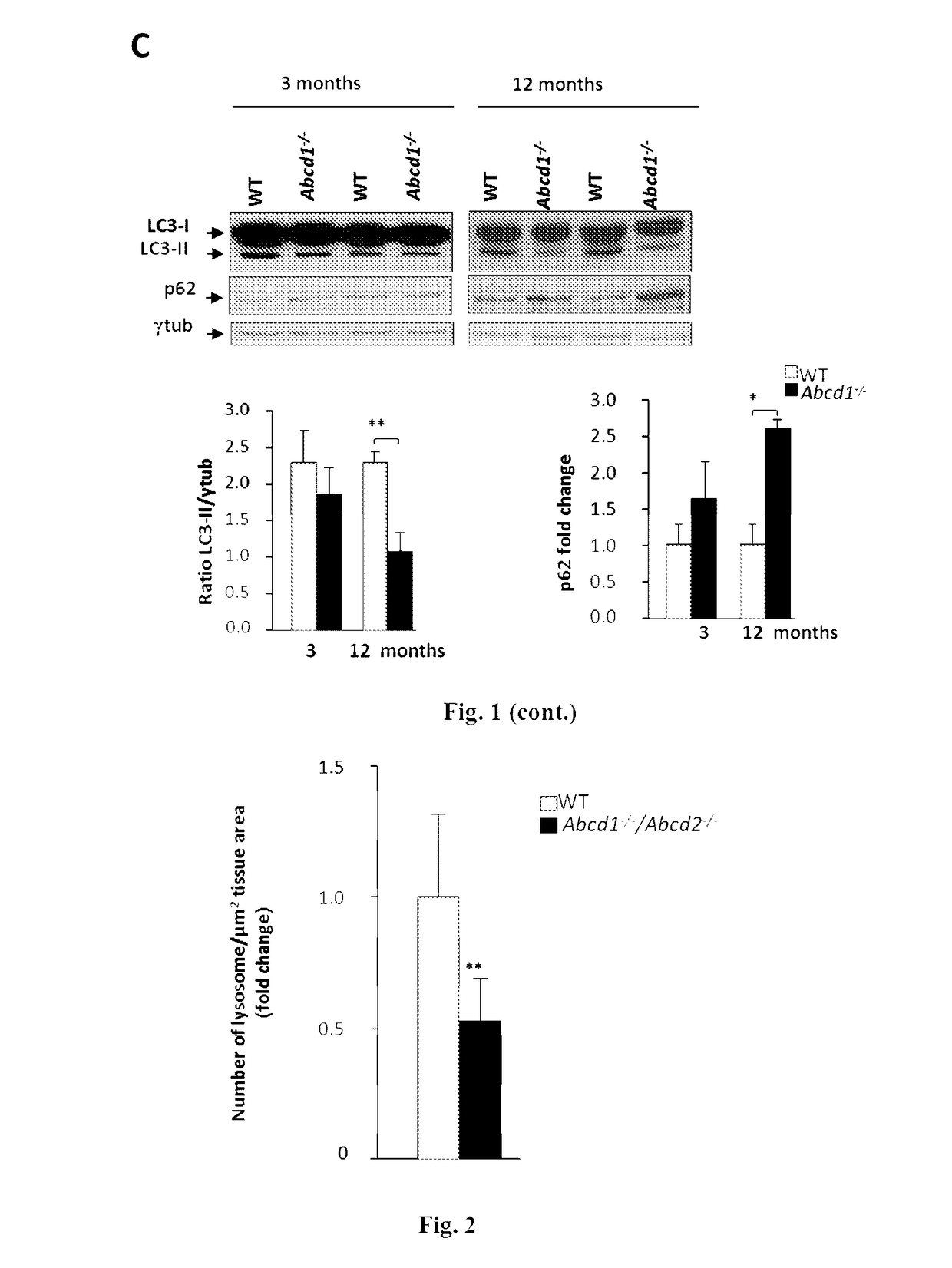Specific mTOR inhibitors in the treatment of X-linked adrenoleukodystrophy
a technology of x-linked adrenoleukodystrophy and specific mtor inhibitors, which is applied in the field of specific mtor inhibitors in the treatment of x-linked adrenoleukodystrophy, can solve the problems of elevated mortality risk, limited success of said treatment, and several limitations
- Summary
- Abstract
- Description
- Claims
- Application Information
AI Technical Summary
Benefits of technology
Problems solved by technology
Method used
Image
Examples
example 1
is Impaired in X-ALD Patients and in X-ALD Mouse Models
[0187]The expression patterns of two molecular indicators of autophagy in patients who suffered the cerebral forms of X-ALD, cCALD and AMN were examined. During activation of macroautophagy, the cytosolic protein LC3-I is converted by lipidation into LC3-1 and associates specifically to both sides of the limiting membranes that form the autophagosome. LC3-II does not bind other organelles and is degraded in an autophagy-dependent fashion in lysosomes. When the levels of LC3-II in non-affected and affected brain areas from cCALD and cAMN patients and in control samples were assessed (FIGS. 1A and B), they were consistently lower in both non-affected and affected brain areas of patients. Since without lysosomal inhibitors LC3-II levels depend on the rates of both formation of autophagosomes and conversion into autolysosomes, this decrease may indicate either an autophagy impairment or an increased autophagosome-endosome / lysosome f...
example 2
is Impaired in Fibroblasts from X-ALD Patients
[0190]To assess autophagy in X-ALD fibroblasts, cells were cultured, as previously described (Fuertes G, et al, 2003, Biochem J 375, 75-86), either in serum- and amino acid-free medium (Krebs-Henseleit medium) to stimulate autophagy via the well described starvation response (H: high proteolysis) or in full medium to asses basal autophagy (L: low proteolysis). The results demonstrated that fibroblasts from X-ALD patients had compared to controls increased p62 levels and lower levels of LC3-II, the latter especially in high proteolysis (H) medium (FIG. 3A). As the observed variations in the levels of LC3-II, in FIG. 3A and also in FIG. 1, can be due to a change in synthesis or in degradation of the protein, human fibroblasts were treated with the lysosomal inhibitor bafilomycin A1 to block LC3-II degradation. Under these conditions, the levels of LC3-11 correlate with the number of autophagosomes in the cells. In the presence of bafilomyc...
example 4
airs Autophagy in Human Fibroblasts
[0194]In X-ALD, VLCFA accumulate. The effect of the addition of an excess of hexacosanoic acid to fibroblasts isolated from controls and X-ALD patients was tested. First, the degradation of intracellular proteins was analyzed to determine if it was any alteration in control and X-ALD fibroblasts upon addition of an excess of VLCFA, by analyzing in pulse-chase experiments the degradation of long-lived proteins under starvation. Total protein degradation and also, separately, lysosomal protein degradation were estimated by procedures previously described (Fuertes G, et al, 2003, Biochem J 375, 75-86). As shown in FIG. 5A, total degradation of long-lived proteins is diminished (about 35%) in X-ALD fibroblasts compared to control fibroblasts.
[0195]Similarly, lysosomal degradation, which under these high proteolysis conditions mainly corresponds to macroautophagy (Fuertes G, et al., 2003 Biochem J 375, 75-86), was markedly decreased (about 50%) to reach...
PUM
| Property | Measurement | Unit |
|---|---|---|
| pH | aaaaa | aaaaa |
| thick | aaaaa | aaaaa |
| pH | aaaaa | aaaaa |
Abstract
Description
Claims
Application Information
 Login to View More
Login to View More - R&D
- Intellectual Property
- Life Sciences
- Materials
- Tech Scout
- Unparalleled Data Quality
- Higher Quality Content
- 60% Fewer Hallucinations
Browse by: Latest US Patents, China's latest patents, Technical Efficacy Thesaurus, Application Domain, Technology Topic, Popular Technical Reports.
© 2025 PatSnap. All rights reserved.Legal|Privacy policy|Modern Slavery Act Transparency Statement|Sitemap|About US| Contact US: help@patsnap.com



